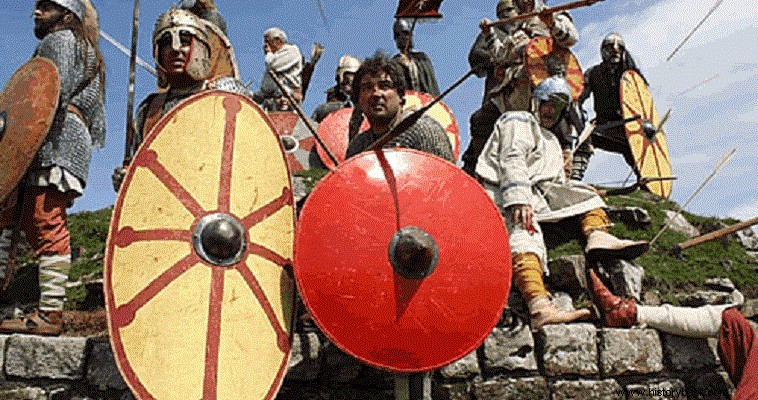
In 444 AD the infamous leader of the Huns, Attila, invaded the Byzantine lands and plundered, slaughtered and plundered, according to the custom of his tribe, saying, smugly, that where he set foot, not even grass grew again! Emperor Theodosius II was forced to accept Attila's humiliating terms, paying him almost 1,050 kilos of gold.
Having received almost all that he asked for, Attila withdrew from the imperial lands. However, he did not cease from time to time to disturb the Empire, raising various issues and new demands.
All this, combined with the heavy annual gold tribute to Attila had caused serious problems in the imperial treasury. In 445 AD Attila murdered his brother and single-handedly assumed the reins of the vast state of the Huns. The following year he decided to invade the Eastern Empire again. But this time he would face stronger resistance.
In 446 AD Constantinople was informed that Attila was preparing for a new invasion. Attila, having assembled a huge army, consisting of Huns, Goths, Gepids and other Germans, crossed the border into the region of Moesia and began his destructive work.
Bloody Interception
Attila this time seemed determined to capture Constantinople . After all, the conditions favored him. In January 447 AD a terrible earthquake hit Constantinople, causing great destruction and above all, tearing down a large part of the city's walls. Attila was informed of the fact and naturally rushed to take advantage of it.
However, so did the Empire, having information about the impending invasion , had prepared as much as possible. The chief strategy had been given to a German general, Amegisklos, who had gathered a powerful army, aspiring to fight Attila in a line-by-line battle.
Amegisklos moved his army to Markianoupolis, in Lower Moesia, at the mouth of the tributary of the Danube Vit, which was then called Utus (Latin Utus). From there he covered the routes to Constantinople and could flank him, even surround him , if he was moving, unwisely, towards the south.
Attila, a seasoned warrior himself, obviously could not ignore the threat. At the same time, the prefect of Constantinople Constantius had mobilized the entire population of the city to repair the walls . In the meantime, high up on the border Amegisklos, upon the first appearance of the Huns, moved against them.
His army took up positions on the river and awaited the enemies, who soon arrived. The sight of Attila's hundreds of thousands of warriors must have been terrible , who lined up against the, in any case, lagging, dramatically, in numerical strength, forces of Amegisklos.
The battle that followed was nevertheless epic, according to the minimal historical evidence which some Byzantine chroniclers and historians saved for her i, such as Iordanis, Marcellinus and the author of the "Epitomia", of the 7th century.
The Imperial troops fought heroically. Amegiscles himself , when his horse was killed, he fought on foot, as a common soldier, until he wasoverrun by numerous enemies . The Imperial army was defeated, but the losses it inflicted on Attila's army justified the sacrifice.
According to the minimal historical data, the battle was attended by from the imperial side the armies of Illyricum and Thrace, but also imperial units from Constantinople . It seems that a middle-aged general, Marcianus, also took part in the battle, who, fortunately for the Empire, survived and then ascended the throne and eliminated the Unnic threat.
Barbaric retaliation
Attila after his bloody victory, incredibly enraged, attacked Markianoupolis , which he literally wiped off the map. However, the opportunity for Attila to capture Constantinople had been lost. At the end of March 447 AD the walls of the City once again rose proudly and the garrison had been reinforced by tough Isaurian soldiers from Asia Minor.
What followed the battle of Wit and the rebuilding of the walls of the Queen only as a campaign of revenge can be perceived. “…there has been so much slaughter, such bloodshed, that no one can count the dead. They leveled temples and monasteries, slaughtered monks and virgins...", says a chronicle of the time.
Attila, after leveling everything, from the Danube southward, reached Thessaly. He was finally intercepted at Thermopylae and retreated.
